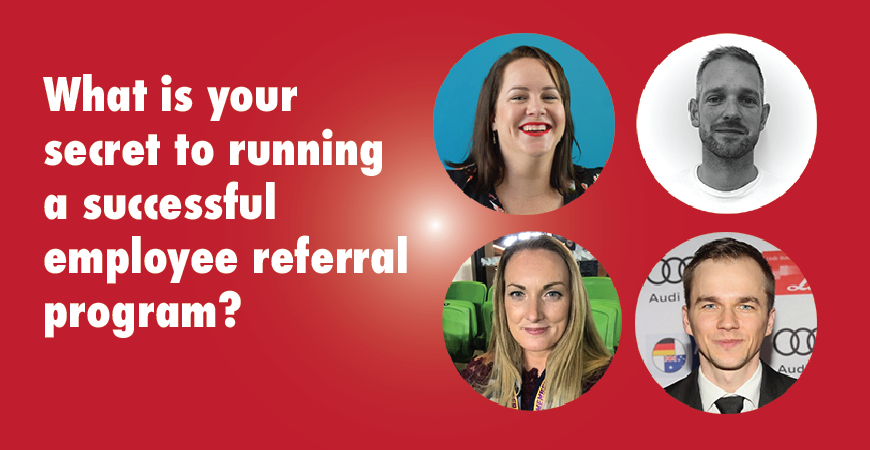2024 Innovation Lab: Talent Tech Pitch Off
What happens if LinkedIn, SEEK, and Indeed turned off the lights and didn’t exist anymore?
Well, turning to your employee referral program would be a good alternative. An employee referral program can be a rich source of potential Talent if it is set up correctly and given the right support. So how can we do that?
We spoke to some of your peers to find out what they are doing to run a successful program. What do you think? Use the comment section to share your thoughts!

Matt Woodard
Senior Tech Recruiter at Zendesk
Critical to the success of our referral programme (our current hire rate is 35-40 percent) is making sure every referral is responded to in a timely manner.
Either to arrange a formal discussion regarding the role/company in general or to simply acknowledge the referral for future roles.
By doing this we ensure the referrer feels their recommendations are valued and the referral rate has remained at a consistently high level as a result.
I have seen higher referral fees paid elsewhere but we continue to get high-quality candidates sent through as a result of the high touch approach we adopt.

Tracey Quinn
Global Talent Acquisition Capability Manager at Mondelez Australia
For me, the key is to have the technology in place to support the program properly from the outset.
Tracking these programs manually can be a huge admin burden if not carefully thought out.
Ideal scenario is that your ATS can support and be a central location for your referrals throughout the recruitment process so that it is easy to track, evaluate and measure the success as well as linking through to the reward administration in the end.

Kara Stevens
Head of People at Noggin
The biggest pitfall is adopting a “set and forget” approach.
Having a referral program and actually getting value from one are two very different things. We need to engage with our people and really drive a culture of encouraging and rewarding employee referrals.
And to do so, we can’t just have a page on the intranet and expect the referrals to start rolling in. Its important that we communicate with the business about what roles we are hiring for and how they can be a part of that process.
Further to this, we need to explain why our people should invest their time in making referrals and how doing so is going to benefit them and the company.
If people don’t understand the why – then knowing the who, how and what is irrelevant.

Stefan Welack
Senior Consultant at Polyglot Group
One of the traps companies often fall into when implementing referral programs is that they make them too complicated and complex rather than a seamless experience.
You will easily discourage your employees from participating if your process requires them to jump through multiple hoops before they can actually refer someone to your company.
Hence, your program guideline should not read like a life insurance policy with chunky paragraphs and rules that are hard to understand and follow through.
You will also want to avoid asking your employees to fill out a pile of paperwork because let’s face it – their day-today tasks keep them busy and most people really don’t enjoy filling out documents. Utilising technology and automated workflows are key here.
Here is a list of employee referral softwares to help you decide which is suitable for you – https://www.g2.com/categories/employee-referral
Do you run a successful employee referral program? Would you like to share your story? Drop us a note and let’s talk!
Speakers
Senior Partner, DE&I Strategy & Governance
Department of Planning, Housing, and Infrastructure – NSW
Talent Team Lead
Head of Recruitment and Employer Brand
Australian Financial Complaints Authority (AFCA)
Talent Manager
























